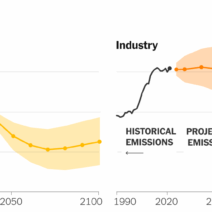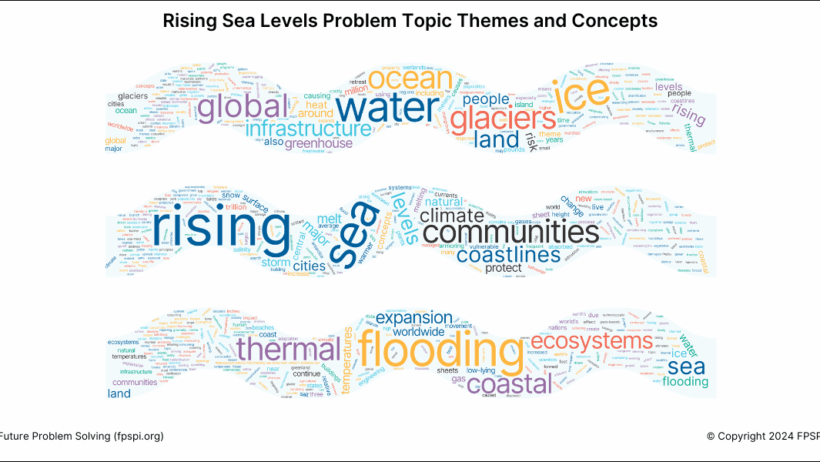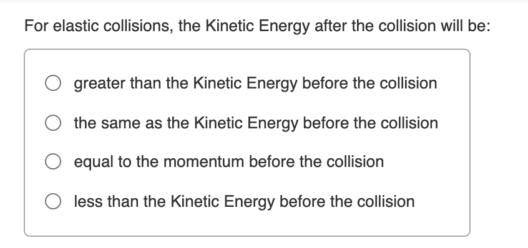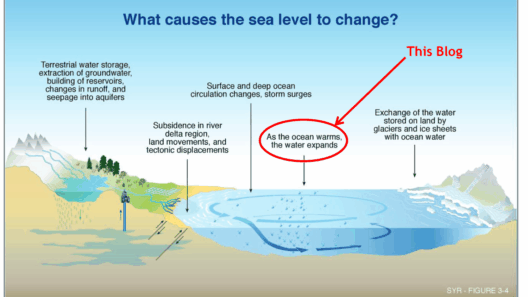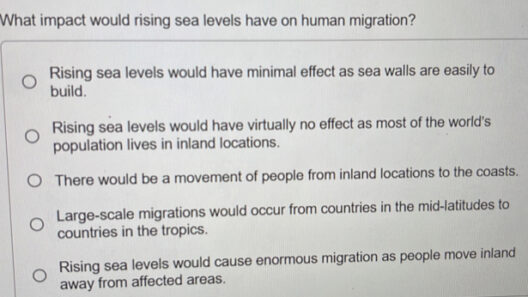The phenomenon of rising sea levels has garnered the attention of scientists, policy-makers, and the general public alike. This environmental concern is not merely a consequence of changing weather patterns; it encapsulates a complex interplay of processes that manifest within our oceans. Understanding the drivers behind this increase is essential for grappling with its implications. To dissect this multifaceted issue, one must look into two principal causative factors: the thermal expansion of seawater and the amplified contributions from terrestrial ice.
Initially, one might ponder how seemingly harmless changes in temperature can lead to such drastic outcomes. However, the intricate relationship between heat and water reveals much about our planet’s dynamics.
Oceanic Thermal Expansion: A Warm Embrace
As the planet steadily warms due to climate change, oceans absorb a significant portion of this excess heat. This phenomenon, known as thermal expansion, occurs when water molecules gain energy and move apart from one another, causing the water to expand. When considering that oceans cover over 70% of the Earth’s surface, even a slight increase in temperature can lead to substantial volume changes.
Studies show that the world’s oceans have experienced an increase in temperature of approximately 1.5 degrees Fahrenheit since the late 19th century. Although this may seem trivial, it translates into billions of tons of additional water volume, contributing to the rising sea levels we observe today.
Moreover, the distribution of this heat is not uniform. The polar regions absorb more heat, exacerbating local melting rates of ice and further accelerating global sea level rise. As a result, thermal expansion serves not only as a direct contributor but also as a silent catalyst for secondary effects—changes that ripple across environments, economies, and ecosystems.
The Melting of Ice Caps: An Icy Dilemma
Perhaps one of the most striking manifestations of climate change is the dramatic melting of glaciers and ice sheets. While thermal expansion is an abyss of water’s physical response, ice melting provides the stark visual evidence of climate transformations. The polar ice caps, especially in Greenland and Antarctica, are losing mass at an alarming rate.
In Greenland, ice loss has increased significantly over the past few decades, and research indicates that the ice sheet has contributed nearly 0.7 millimeters per year to global sea level rise. Antarctica is not far behind, with ice shelves disintegrating and contributing roughly the same amount yearly. This dissolution contributes more than just the loss of icy habitats; it also alters global air and ocean currents, which can exacerbate weather extremes in distant regions.
Furthermore, the interplay between ocean temperatures and ice melting is equally alarming. Warm ocean waters eat away at the undersides of ice shelves, facilitating further melting and isolation of icebergs. This feedback loop can create a situation where improvements in atmospheric temperatures lead to a cascading series of events, culminating in irrevocable changes.
The Role of Natural Variability: A Complex Equation
To fully comprehend rising sea levels, one must account for natural climate variability. While the influence of anthropogenic factors, such as greenhouse gas emissions, is undeniable, the Earth’s climate system also exhibits inherent variability. Phenomena such as El Niño and La Niña have profound impacts on ocean temperatures and precipitation patterns, leading to temporary fluctuations in sea levels.
During El Niño events, for instance, warmer ocean temperatures in the central and eastern Pacific can cause sea levels to rise in various coastal regions, affecting local ecosystems and communities. Conversely, La Niña can induce temporary drops in sea levels in specific areas. Such oscillations illustrate that rising sea levels are not linear and can be influenced by both human activity and Earth’s natural cycles.
Socioeconomic Implications: More Than Just Numbers
The increasing threat of rising sea levels extends far beyond mere scientific data—it has profound repercussions for coastal communities, wildlife habitats, and urban infrastructure. Shorelines worldwide are facing erosion, with some regions experiencing land loss at a pace of greater than a meter each year. Low-lying nations and coastal cities are particularly vulnerable, with rising tides threatening dislocation and loss of livelihoods for millions.
Countries like Bangladesh and Maldives face existential crises, where entire populations may need to relocate, resulting in climate refugees—a term that underscores the pressing humanitarian and political challenges stemming from environmental decay. Furthermore, the economic implications are staggering. Billions are needed to fortify coastlines, manage flooding, and invest in adaptive measures.
While advancements in maritime engineering provide some optimism, the urgency for comprehensive climate action cannot be overstated. Mitigating the drivers of rising sea levels depends on global cooperation in reducing greenhouse gas emissions, investing in renewable energy, and embracing sustainable practices.
Conclusion: A Collective Responsibility
Rising sea levels present a complex tapestry of scientific interaction, environmental surprisingly, and human consequence. As the ocean’s embrace rises, so too does our collective responsibility to confront these challenges head-on. Understanding the drivers of this phenomenon equips us with the knowledge necessary to advocate for sustainable solutions and preserve the integrity of our coasts for future generations. If left unaddressed, the consequences may extend far beyond the shorelines—echoing through ecosystems, economies, and the very fabric of human life itself.

